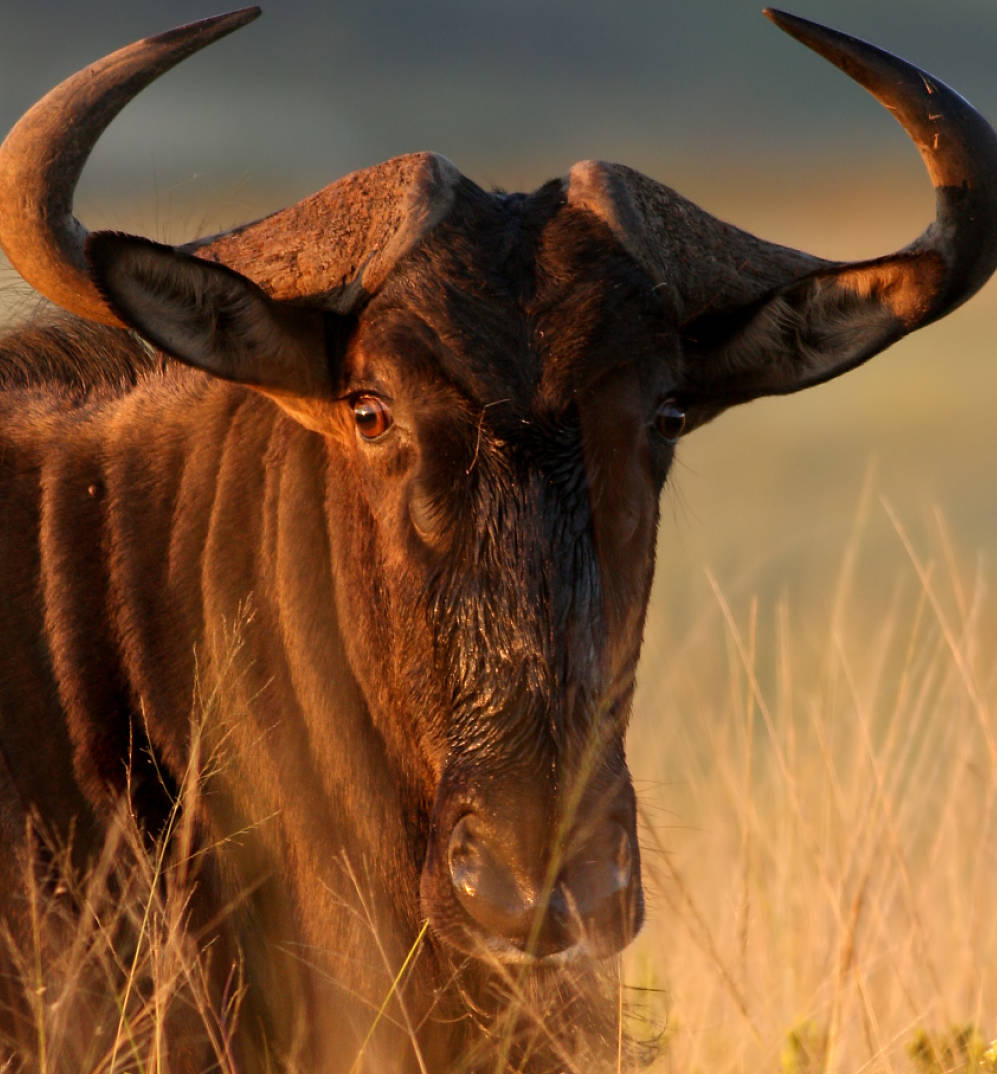Wildebeest Facts
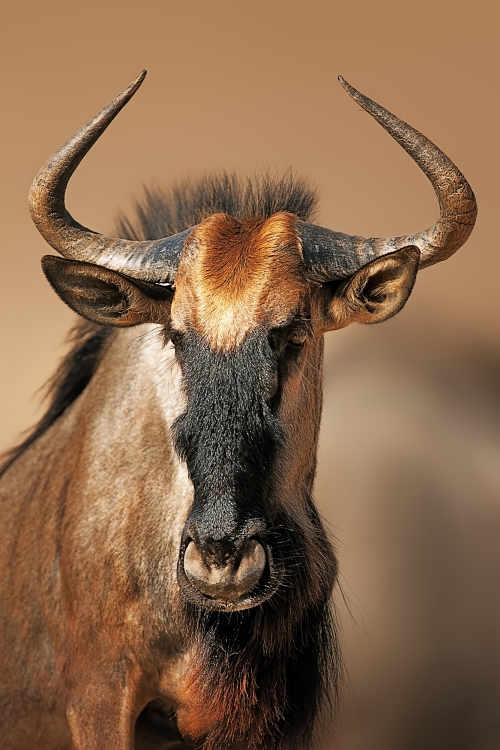 Portrait of a Wildebeest
Portrait of a WildebeestOne of the most amazing wildebeest facts is that their journey across Africa is part of the Great Migration every year...
The wildebeest is the iconic antelope of the African plains, with a marvelous, rugged appearance, and unmistakable anvil-shaped head.
It is also commonly called the gnu - pronounced "new", and sometimes referred to as the "fool of the veld" or the "poor man's Buffalo"
Wildebeest live in massive herds of sometimes thousands, and many participate in the Great Migration, one of the most amazing spectacles in the animal kingdom.
Bizarrely proportioned, and seemingly anonymous in their large herds, the wildebeest is often overlooked, and sometimes even maligned as unattractive and unintelligent.
Well, beauty is in the eye of the beholder, but from an intelligence standpoint wildebeests are actually very vibrant animals with playful personalities and some very admirable traits.
One of the toughest creatures in Africa, the wildebeest is always on the move, grazing day and night, napping occasionally, while some keep watch.
In nature documentaries they are every predators favorite meal and seem to fall victim constantly.
But the wildebeest is one of the few African residents that has increased in numbers since the 1960's, and the fact is, many live remarkably long lives on the plains, sometimes reaching 20 years of age.
There are two species of wildebeest, the black wildebeest, and the far more common blue wildebeest.
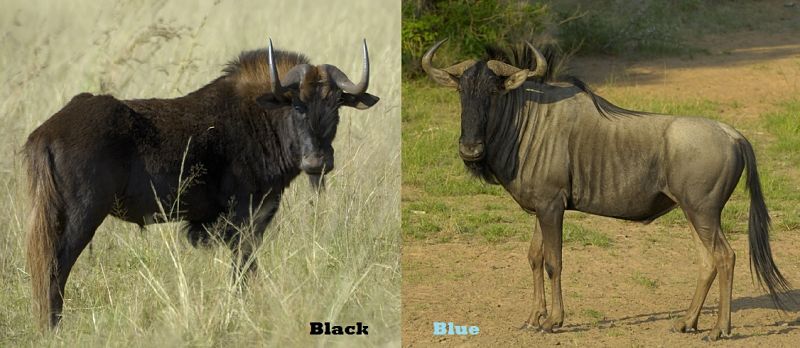
The blue wildebeest has a silvery blue hue to the coat, with black mane and tail.
The black wildebeest is actually primarily brown in color, with a flaxen colored tail and a stiff upright mane of black and pale tan.
From afar, however, the black wildebeest may appear decidedly dark and even black in color.
Black wildebeest weigh between 250 and 400 pounds and 44 to 48 inches at the shoulder, while the blue wildebeest averages 300 to 600 pounds and stands 4 to nearly 5 feet at the shoulder.
The horn placement of the two species is different also, with the black wildebeests horns protruding first forwards, before dropping down and back up, while the blues horns extend to the sides, then down and up again.
Both males and females have horns, but those of a mature male are larger overall, and thicker in particular.
A mature male blue wildebeest may have horns over 60 inches wide.
During breeding season male wildebeests attempt to establish territories and impress females by battling other males.
Bulls will charge eachother, bellow, and kneel down and thrash horns in a dramatic display.
Females give birth standing up in the center of the herd, to one large, well formed calf.
Within 15 minutes of the newborn hitting the ground, it will be up and moving with the herd.
Not all populations of wildebeests migrate.
Most black wildebeest are actually permanent residence throughout their range.
But some herds of blue wildebeest must journey long distances in search of food and breeding grounds.
Every year some 2 million wildebeest along with 800,000 zebras and gazelles form one giant, continuous herd and travel about 1,800 miles following the rains.
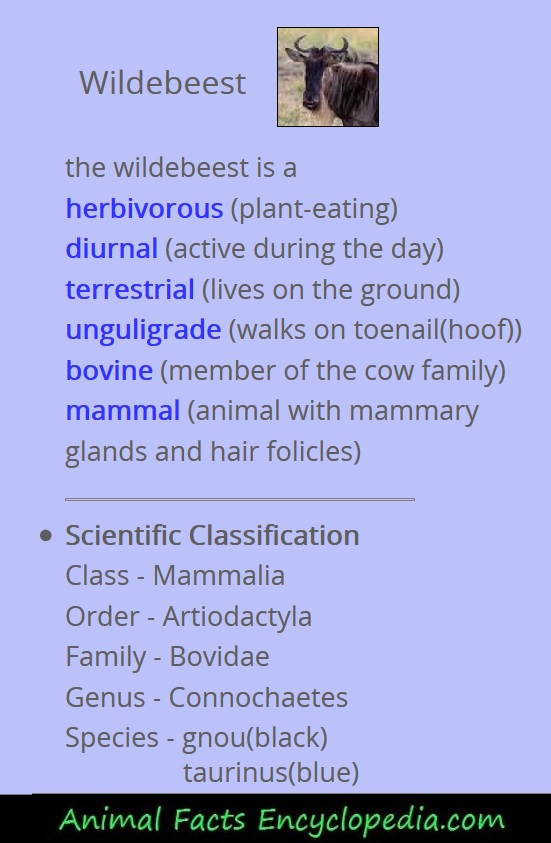
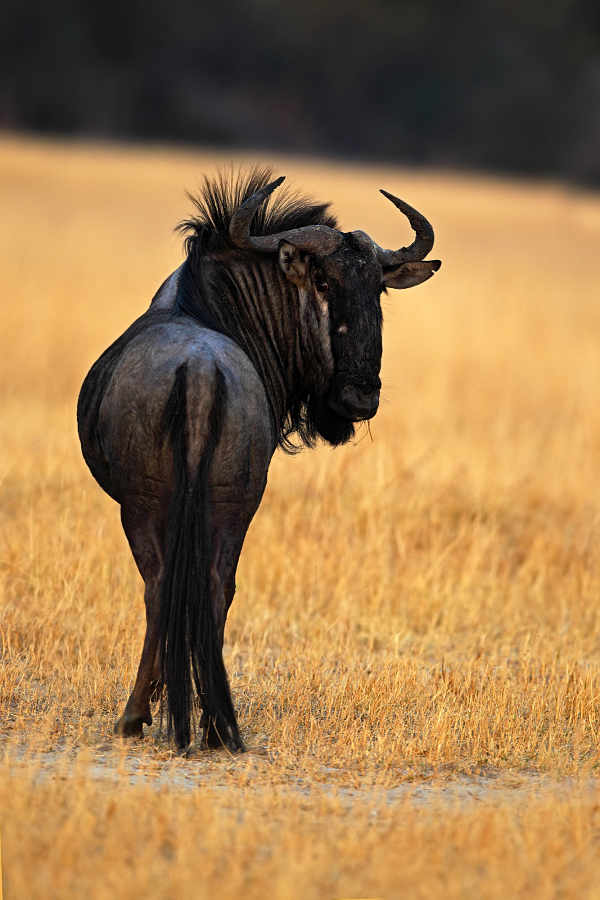

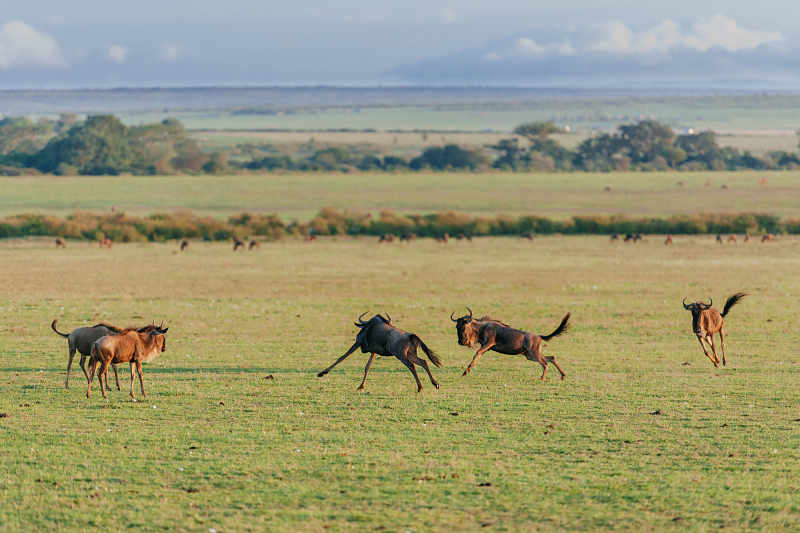
a few more Wildebeest facts
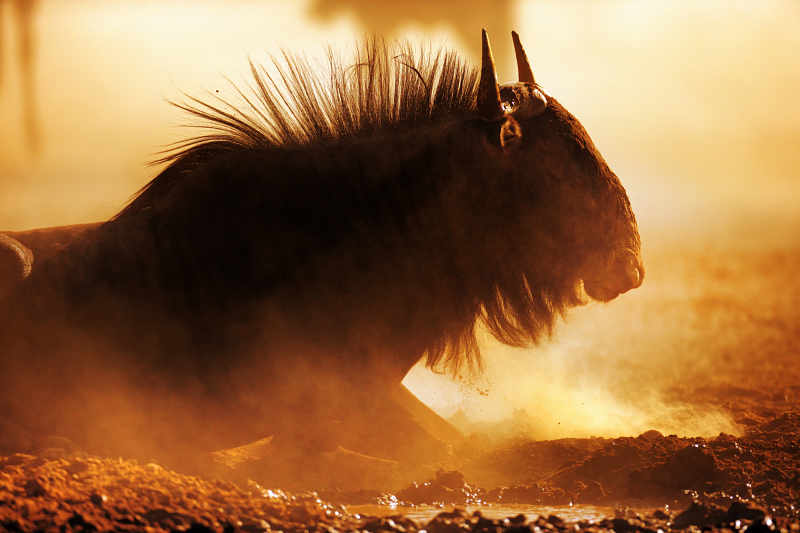
- Wildebeest are energetic, active and playful
- A wildebeest can run at 50 miles per hour
- There are 2 species of wildebeest, blue wildebeest and black wildebeest
- Wildebeest have a lifespan of up to 20 years
- Both male and female wildebeests have horns
- Some 2 million wildebeest take part in the great migration each year
- Not all populations of wildebeests migrate
see more animal extreme closeups
Recent Articles
-
African Animals - Animal Facts Encyclopedia
Oct 11, 16 10:27 PM
African Animals facts photos and videos..Africa is a wonderland for animal lovers, and a schoolroom for anyone who wants to learn about nature, beauty and the rhythm of life -
Baboon Facts - Animal Facts Encyclopedia
Oct 11, 16 10:26 PM
Baboon facts, photos, videos and information - Baboons are very distinctive looking monkeys with long, dog-like snouts and close set eyes. -
Great Apes Facts - Animal Facts Encyclopedia
Oct 11, 16 10:25 PM
Great apes facts, photos and videos..Human beings did not evolve from chimpanzees, modern chimps and gorillas do not appear in the fossil records until much more recently than homo sapiens..




















